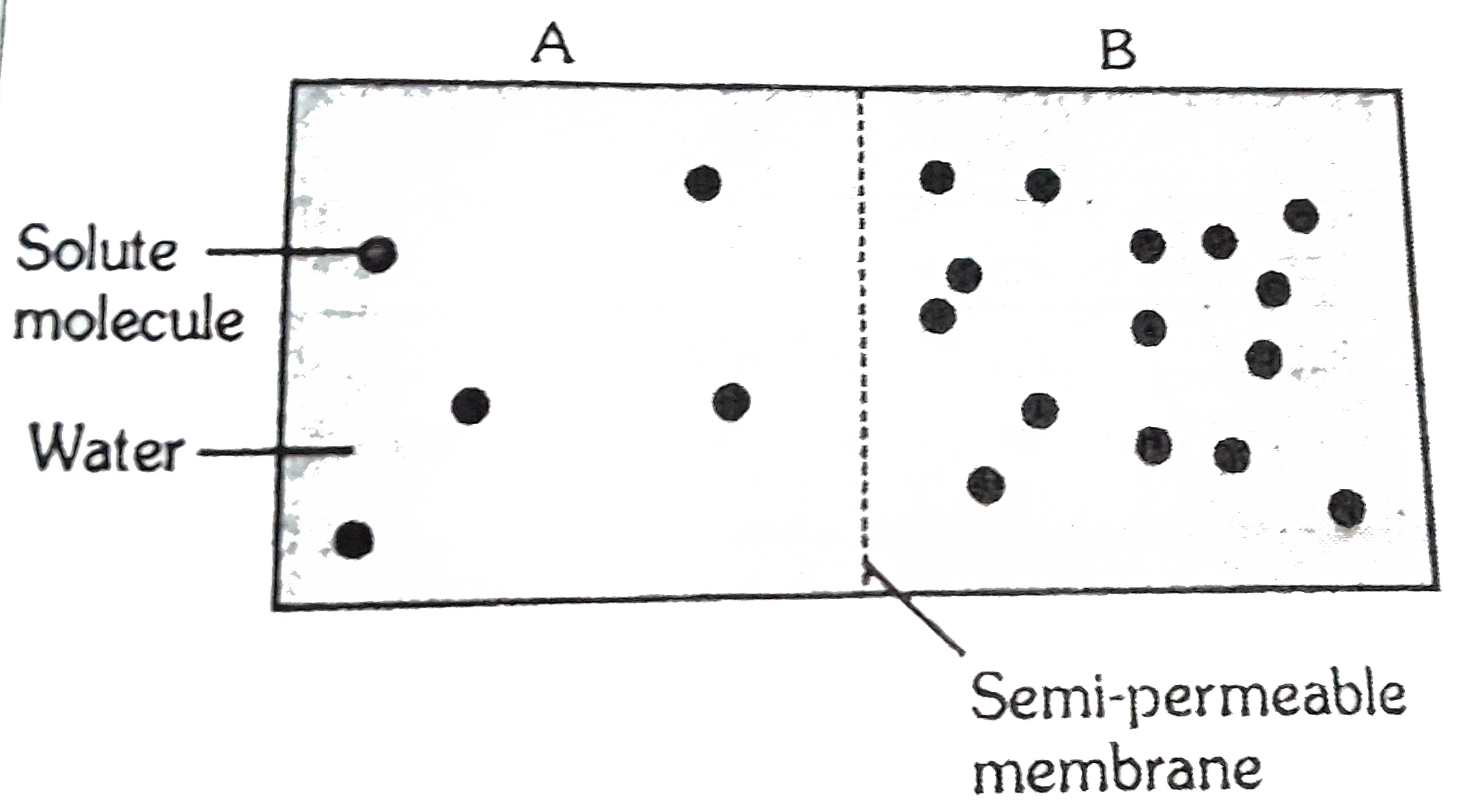0.1 M solution of a solute has a water potential of
-2.3 bars
Zero
2.3 bars
22.4 bars
The correct Answer is:A
To find the water potential of a 0.1 M solution of a solute, we can use the formula for water potential (Ψ):
Ψ=−iCRT
Where:
- Ψ = Water potential
- i = Ionization constant (number of particles the solute dissociates into)
- C = Molar concentration of the solution (in molarity)
- R = Pressure constant (0.0831 liter bar per mole kelvin)
- T = Temperature in Kelvin (for standard conditions, we can use 273 K)
1. Identify the Ionization Constant (i):
- For a non-electrolyte solute, the ionization constant i is typically 1. If the solute dissociates into more than one particle, you would use that number. Here, we assume i=1.
2. Determine the Molar Concentration (C):
- The problem states that the concentration of the solution is 0.1 M. So, C=0.1.
3. Use the Pressure Constant (R):
- The value of R is given as 0.0831 liter bar per mole kelvin.
4. Set the Temperature (T):
- We will use standard temperature, which is 273 K.
5. Plug the values into the water potential formula:
Ψ=−iCRT
Ψ=−1×0.1M×0.0831liter bar per mole kelvin×273K
6. Calculate the value:
- First, calculate 0.1×0.0831×273:
0.1×0.0831=0.00831
0.00831×273=2.27(approximately)
- Therefore, Ψ=−2.27bars.
7. Round the value:
- Rounding to one decimal place gives us approximately −2.3bars.
Final Answer:
The water potential of a 0.1 M solution of the solute is approximately -2.3 bars.
---
- Ψ = Water potential
- i = Ionization constant (number of particles the solute dissociates into)
- C = Molar concentration of the solution (in molarity)
- R = Pressure constant (0.0831 liter bar per mole kelvin)
- T = Temperature in Kelvin (for standard conditions, we can use 273 K)
- For a non-electrolyte solute, the ionization constant i is typically 1. If the solute dissociates into more than one particle, you would use that number. Here, we assume i=1.
- The problem states that the concentration of the solution is 0.1 M. So, C=0.1.
- The value of R is given as 0.0831 liter bar per mole kelvin.
- We will use standard temperature, which is 273 K.
Ψ=−iCRT
Ψ=−1×0.1M×0.0831liter bar per mole kelvin×273K
- First, calculate 0.1×0.0831×273:
0.1×0.0831=0.00831
0.00831×273=2.27(approximately)
- Therefore, Ψ=−2.27bars.
- Rounding to one decimal place gives us approximately −2.3bars.
The water potential of a 0.1 M solution of the solute is approximately -2.3 bars.
Topper's Solved these Questions
- TRANSPORT IN PLANTSBOOK - DINESH PUBLICATION ENGLISHCHAPTER - TRANSPORT IN PLANTSEXERCISE - CHECK YOUR GRASP
40 Videos
- TRANSPORT IN PLANTSBOOK - DINESH PUBLICATION ENGLISHCHAPTER - TRANSPORT IN PLANTSEXERCISE - CHECK YOUR GRASP
40 Videos
- THE LIVING WORLDBOOK - DINESH PUBLICATION ENGLISHCHAPTER - THE LIVING WORLDEXERCISE - Check your grasp
12 Videos
- VERTEBRATA-AGNATHA AND PISCESBOOK - DINESH PUBLICATION ENGLISHCHAPTER - VERTEBRATA-AGNATHA AND PISCESEXERCISE - Check Your Grasp
12 Videos
Similar Questions
If cells kept for sometime in 1M solution of sucrose and 1M solution of NaCl. The water potential (Ψw) of the cells kept in:
View SolutionAssertion (A): 0.1M solution of glucose has same increment in freezing point than has 0.1M solution of urea.
Reason (R ): Kf for both has different value.
View Solution
Knowledge Check
In hypertonic solution the water potential of cell
AincreasesBdecreasesCfirst increases then decreasesDremains unchanged
When solute is mixed in solution , the water potential of the solution
View SolutionGiven below is a figure of solution A & B .

Which of the following are true for solution B
(i) Solution B has a higher water potential
(ii) Solution B has lower solute potential
(iii) Solution B has higher DPD
(iv) Solution B has lower OP
(v) Its Ψs has a negative value
View SolutionAssertion: The chemical potential of pure water at normal temperature and pressure is zero.
Reason: In solution, value of water potential is always positive.
View SolutionStudy the given figure carefully and select the true and false:- statement(s) regarding it.

(a) Solution of chamber B has a lower water potential.
(b) Solutio of chamber A has a lower solute potential
(c). Osmosis occurs from chamber A to B.
(d) Solution f cham ber B has higher solute potential.
(e) At equlibrium both chambers have equal water potential.
(f) If one chamber has a Ψ of -2000 kPa and the other -1000kPa then chamber with Ψ of -1000 kPa has the highger Ψ
View SolutionAssertion (A): 0.1M solution of NaCl has greater osmotic pressure than 0.1Msolution of glucose at same temperature.
Reason (R ): In solution, NaCl dissociates to produce more number of particles.
View SolutionWhat will be the direction of movement of water , when solution X having water potential of 12 - bars and another solution Z to -8 bars is separated by a semipermeable membrane ?
View SolutionPotato slices were placed in sucrose solution . After half an hour, density of sucrose solution increased . Water potential of Pototo tuber is
View Solution
